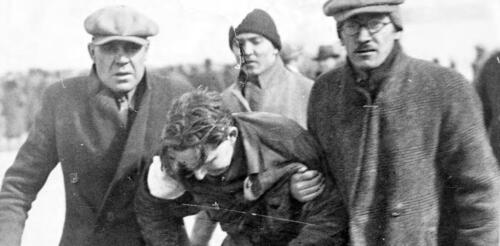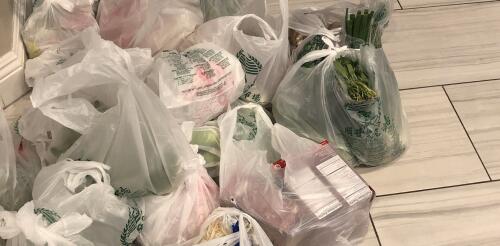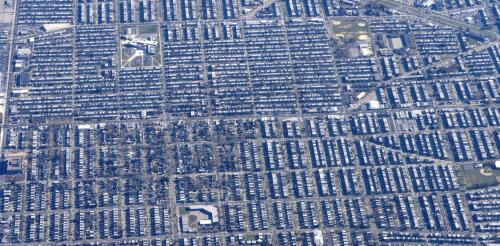Local
The intersection of Fort Street and Oakwood Boulevard in southwest Detroit today functions mostly as a thoroughfare for trucks and commuters. However, as you sit idling at the stoplight waiting to cross the bridge over the Rouge River, you might glance to the side and see something unexpected in this heavily industrialized area: A sculpture of weathered steel reaches toward the sky alongside a spray of flowers and waves of grasses and people fishing. This inconspicuous corner, now the home of the Fort Street Bridge Park, has several stories to tell: of a river, a region, a historic conflict and an ongoing struggle. If you pull over, you’ll enter a place that attempts to pull together threads of history, environment and sustainable redevelopment. Signs explain why this sculpture and park are here: to honor the memory of protesters who met on this very spot on March 7, 1932, before marching up Miller Road to the massive Ford Rouge River Complex located in the adjacent c...
Flowers grown on inexpensive floating platforms can help clean polluted waterways, over 12 weeks extracting 52% more phosphorus and 36% more nitrogen than the natural nitrogen cycle removes from untreated water, according to our new research. In addition to filtering water, the cut flowers can generate income via the multibillion-dollar floral market. In our trials of various flowers, giant marigolds stood out as the most successful, producing long, marketable stems and large blooms. Their yield matched typical flower farm production. Why it matters Water pollution is caused in large part by runoff from farms, urban lawns and even septic tanks. When it rains, excess phosphorus, nitrogen and other chemicals wash into lakes and rivers. These nutrients feed algae, leading to widespread and harmful algae blooms, which can severely lower oxygen in water, creating “dead zones” where aquatic life cannot survive. Nutrient runoff is a critical issue as urban areas expand,...
Colorado banned plastic bags from large retail stores at the beginning of 2024. A new state ordinance also prohibits restaurants and retail food establishments from using Styrofoam takeout containers. In Boulder, food shoppers have been paying 10 cents for every bag they need at checkout since 2013, with only paper and heavy-duty plastic bags available. Those fees were expanded this year to retail stores of all kinds and sizes. The Conversation interviewed Eleanor Putnam-Farr, an assistant professor of marketing at Rice University and co-author of “Forgot Your Bottle or Bag Again? How Well-Placed Reminder Cues Can Help Consumers Build Sustainable Habits,” about the challenges of changing people’s behavior – even when their intentions are good. How popular are plastic bag bans and taxes? Laws like Colorado’s are popular. Twelve states, plus Puerto Rico, and more than 300 municipalities, including Philadelphia, have banned plastic bag use by consum...
Gray wolves were reintroduced to Colorado in December 2023, the latest attempt in a decadeslong effort to build up wolf populations in the Rocky Mountain states. SciLine interviewed Joanna Lambert, professor of wildlife ecology and director of the American Canid Project at the University of Colorado Boulder, who discussed how and why gray wolf populations declined in the U.S. and the value of reintroducing them to ecosystems in the West. Dr. Joanna Lambert discusses the gray wolf restoration campaign. Below are some highlights from the discussion. Answers have been edited for brevity and clarity. How can protecting gray wolf populations affect ecosystems? Joanna Lambert: Apex predators, and predators in general, are disappearing from landscapes around the planet. Without apex predators, their prey species can become overly abundant. But when apex predators are reintroduced, prey populations decrease and vegetation can rebound. So in cert...
The ways an urban neighborhood is built and the characteristics of the people who live there are both related to how hot it gets. That is the result of our study, published by the Journal of Buildings. If you have ever noticed that some parts of a city feel significantly hotter than others, you have experienced a phenomenon known as the urban heat island effect. This effect is most noticeable at night and when comparing rural and suburban surroundings with urban ones. How we did our work Our interdisciplinary group of researchers studied two Philadelphia census tracts and found a clear link between outdoor temperature and specific urban characteristics. We then asked whether these urban characteristics can be related to the social vulnerability of the residents. Social vulnerability is a concept that goes beyond the residents’ income to include housing conditions and characteristics of the people – such as their age, education, disability and race. Our social vulne...




